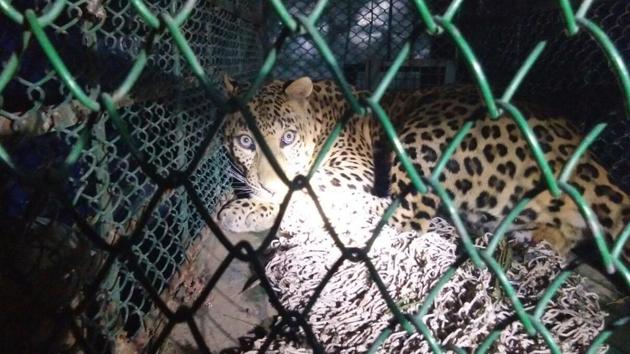Man-animal conflict reduces, good year for Gurgaon’s wild animals
Three leopards and eleven snakes were rescued and released into the Aravallis this year
The news of a scared leopard, who had strayed into Mandawar, getting beaten to death by lathi-wielding villagers made national headlines as 2016 drew to a close. The ignorance-fed brutality shook the conscience of the citizens and that of the district wildlife department officials, who failed to tranquilise or capture the young animal with nets. The year changed and, thankfully, so did the wildlife department’s approach towards handling the man-animal conflict.

The year 2017 reported three instances of leopards, among other animals, straying into human settlements. In all cases, the animal was rescued and returned to the wild, unharmed.
The state government attributes this success to staff sensitisation, training and awareness campaigns for villagers, conducted along with active citizen groups, as 2016 wasn’t the first time when a leopard was killed in the state’s villages.
In 2011, a mob, in the presence of government officials, beat a male leopard to death in Kheri Gujaran village. In 2014 again, four leopards were found dead within a week in and around a private golf resort, and in the past few years, about half-a-dozen other leopards were killed in road accidents.
“Starting January, we conducted many awareness camps in villages around the Aravalli hills. People were told about the wild animals that usually stray into villages, such as leopards and jackals, and that such cases will continue as villages grow. We educated villagers on how to respond to the situation and inform the wildlife department,” divisional forest officer (wildlife), Gurgaon, Shyam Sunder Kaushik said, adding that these awareness efforts were boosted by extensive training session for the staff.
The forest, wildlife and terrestrial staff members were taught how to use a tranquiliser gun, animals nets and most importantly, how to patiently goad the animal out using a bait.
The two successful rescue operations this year—April 27 and October 6—were conducted around the same area where the two-and-a-half year old leopard was killed in 2016.
“The training was put to good use, especially at the Maruti plant in Manesar where it took 36 hours to draw the leopard out using raw meat as bait,” Kaushik said.
Similarly, a number of Indian rock pythons, the most commonly found snakes in and around Gurgaon, were also rescued by the wildlife team, with as many as nine being rescued in October alone.
The wildlife department is now planning to collar a few leopards and study their behaviour.
“We have proposed to collar five leopards to understand their habits to improve our rescue programmes,” said Vinod Kumar, conservator of wildlife, south Haryana.
Experts couldn’t be more enthused by the news.
Prerna Singh Bindra, environment journalist and author of The Vanishing: India’s Wildlife Crisis, said it is time human beings learnt to co-exist with animals, especially with civilization eating into forests. “The wildlife is again claiming its presence in the region. The take-home for me in 2017 is that it is time for Gurgaon to accept that it counts leopards among its residents. We need to live in peace with them and other animals so both are not harmed,” she said, adding that man-animal conflict is a sign that the city’s much-battered ecology persists.




